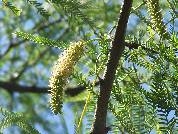Evaluation of the vegetation of the herbaceous stratum in a forest of Espinal Santafesino (Argentina)
DOI:
https://doi.org/10.14522/darwiniana.2020.81.854Keywords:
Floristic description, fodder, herbaceous plants, Santa Fe province, trees, vegetation relictAbstract
In the Espinal Santafesino only relicts of forests remain. The present study was carried out in the town of Sa Pereira, Argentina, in the herbaceous stratum of an algarrobo forest of approximately 100 ha. The aim was to perform a description of the herbaceous vegetation. Samples were taken in 16 m2 plots, using the Braun-Blanquet abundance-cover method (64 plots) on a base transect. Two samplings were performed, one in autumn-winter-spring (AWS) and another in spring-summer (SS). To characterize the herbaceous communities Simpson, Equity and Shannon diversity indexes were used. Three groups of herbaceous communities were identified: “flechillares”, humid prairies and “gramillares”, distinguishing eight variants thereof. There were 45 families and 156 species, with the most represented families Poaceae and Asteraceae (38 and 25 species respectively). On average, 20.8 and 18.1 species were recorded per plot for the AWS and SS samples. In the AWS and SS samples, an average Simpson diversity index of 6.72 and 8.42 was obtained, while the Shannon diversity index was 2.09 and 2.30, respectively. In the AWS samplings, the humid prairies were more diverse according to these indexes, followed by “flechillares” and “gramillares”, whereas in the SS sampling, “flechillares” were the most diverse. The average equitability index for the AWS samples was generally lower than the SS for all the community groups.

Downloads
Published
How to Cite
Issue
Section
License

Starting on 2012, Darwiniana Nueva Serie uses Licencia Creative Commons Atribución-NoComercial 2.5 Argentina .





